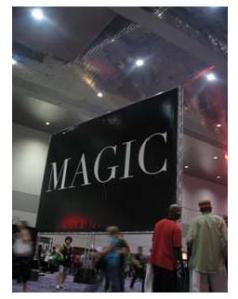Francisco Sánchez is the Under Secretary for International Trade
Today I was fortunate enough to speak at the SMC3 conference in Chicago about the progress we’ve made toward achieving the President’s goal of doubling U.S. exports. SMC3 is a supply chain industry association that provides technology to shipping and logistics companies across the country, the very same companies who ensure the efficient transportation of American exports. Each year, the conference brings together representatives from America’s most active manufacturing, trucking, rail, shipping, and logistics firms.
The success of U.S. exporters depends in part on U.S. businesses being able to quickly and efficiently get their products to market. So it was fitting that I gave these remarks in Chicago, home to some of America’s most important freight and transportation corridors. According to the latest data, the Chicago metropolitan area is the 7th largest export market in the U.S. with merchandise shipments totaling nearly $34 billion.

Under Secretary Francisco Sanchez and Chicago U.S. Export Assistance Center Director Julie Carducci present Export Achievement Certificate to BayRu CEO Aaron Block. (Photo Commerce)
Chicago is also home to some of America’s top exporters. I was pleased to honor an innovative company, BayRu, with an Export Achievement Certificate while in Chicago. Their online store, http://www.bay.ru, BayRu is one of the fastest growing e-commerce sites in Russia. On bay.ru, Russian shoppers can buy a wide range of American consumer goods found in catalogues like E-bay and Amazon and then have those products shipped to more than 160 cities across Russia and other CIS states.
But what makes this company unique is that it’s headquartered right here…in Skokie, Illinois. BayRu has a unique business model of buying American consumer goods here, which are often tough to find in Russia, repackaging them, and then exporting those goods for delivery in Russia.
In January 2011, BayRu partnered with the International Trade Administration’s Commercial Service in Chicago and Moscow to gain market knowledge and insight. Since partnering with ITA, BayRu’s export sales increased by more than $10 million and it plans to create 20 local jobs here in the Chicago area.
BayRu is just another example of an American company being creative, growing their business through exports, and creating good-paying jobs for Americans in the process. But it is also the prime example of a company that would benefit from Russia’s WTO accession and the repeal of the Jackson-Vanik Amendment.
Currently, Russia is set to join the WTO, which will reduce tariffs and increase transparency, making it easier for American companies to access this large and growing export market. However, Russia is still covered by the Jackson-Vanik Amendment, which makes trade conditional with certain economies. If this amendment is not repealed, American businesses would not be able to enjoy the benefits of more open trade with Russia.
That’s why the Obama administration has called on Congress to repeal the amendment and grant Permanent Normal Trade Relations (PNTR) with Russia as soon as possible. It makes no sense to let American businesses stand on the sideline while our global competitors take advantage of Russia’s WTO accession and gain access to a growing market with new opportunities for innovative American companies, like BayRu.
If Congress establishes PNTR with Russia, it will open the door for American businesses to expand into Russia and create jobs here at home. BayRu will enjoy many real benefits, direct and indirect. Increasing trust and awareness of U.S. brands will help drive their growth even further and help them create more good-paying jobs in Chicago.
This is an important issue for many businesses across the country. To find out more about what Russia WTO accession and the repeal of Jackson-Vanik could mean for business, visit our website where you’ll find detailed reports on potential opportunities for U.S. businesses.







